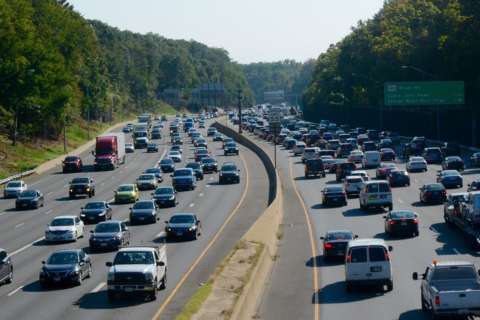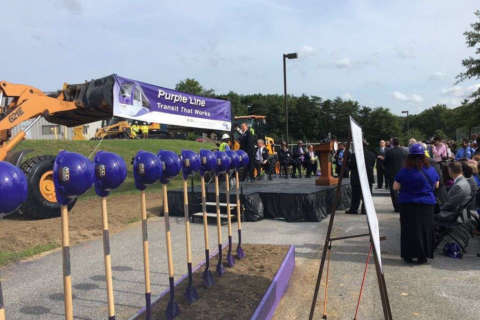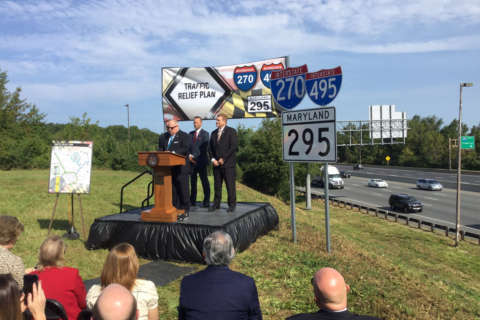ROCKVILLE, Md. — A month after Maryland Gov. Larry Hogan introduced it, Maryland’s Secretary of Transportation Pete Rahn went in front of Montgomery County leaders to lay out a $9 billion project that aims to ease congestion on Interstate 270, the Capital Beltway and the Baltimore-Washington Parkway.
Rahn believes construction of the project can begin in fewer than five years.
“We have to recognize we have problem. It’s a multifaceted problem, and we have to come up with multifaceted solutions,” Rahn told members of the Montgomery County Council’s Transportation, Infrastructure, Energy, and Environment committee Thursday.
If you put a price tag on what congestion costs drivers today, the price would be $2 billion annually, Rahn said.
Packed roads cost drivers time, as well. The state found the Beltway sees 10 hours of congestion on average each day during the workweek, and I-270 and MD 295 both see seven hours of heavy traffic daily.
“If we can address this problem in a substantial way, it will mean people will have more time,” said Rahn.
The state’s plan includes adding express lanes to all three highways. On the Beltway, a public-private partnership will be formed to build the express lanes quickly from the American Legion Bridge to the Woodrow Wilson Bridge and on I-270 between I-70 and the Beltway.
Before any expansion can move forward with MD 295, the state must take highway — which has in the past been offered to Maryland, most recently in 1973 — and Rahns’ hope is the offer may end up on the table again.
Some council members had questions about how many lanes will be added and what tolls will cost drivers. Rahn said the state doesn’t have those answers yet. “I don’t know what it is going to take,” he said.
Rahn said as they reach out to organizations in the private sector, they hope for innovative ideas on how to make these transformations a reality.
The announcement of the project was news to Montgomery County leaders, but Rahn said the state will be working closer with local government as the project progresses.
“At the beginning of this process we were obviously surprised and not consulted previously, but OK, that’s water under the bridge,” County Council President Roger Berliner said.
Rahn said the state is going the public-private route because Maryland’s current budget can pay for or maintain such an expansion project and many members support that decision.
“The cost is so high that they’re going to have to be creative about it, and the private sector has money to devote it,” said Nancy Floreen, a member of the Montgomery County Council.
Rahn said he believes the projects will create jobs because a huge percentage of the people who will help build the expansion project and maintain the lanes will be from this region.
Several members of the council committee raised questions about the impact on areas which surround the roads to be expanded, including homes and parks. Rahn said he plans make it clear to private sector bidders that they want to limit the impact on surrounding communities.
There were concerns expressed about whether or not the American Legion Bridge would be included in the expansion project, and Rahn confirmed that it would be.
Currently, the state has put out requests for information from private industry, and next year it plans to ask for project proposals from those interested in building and operating the new lanes.








